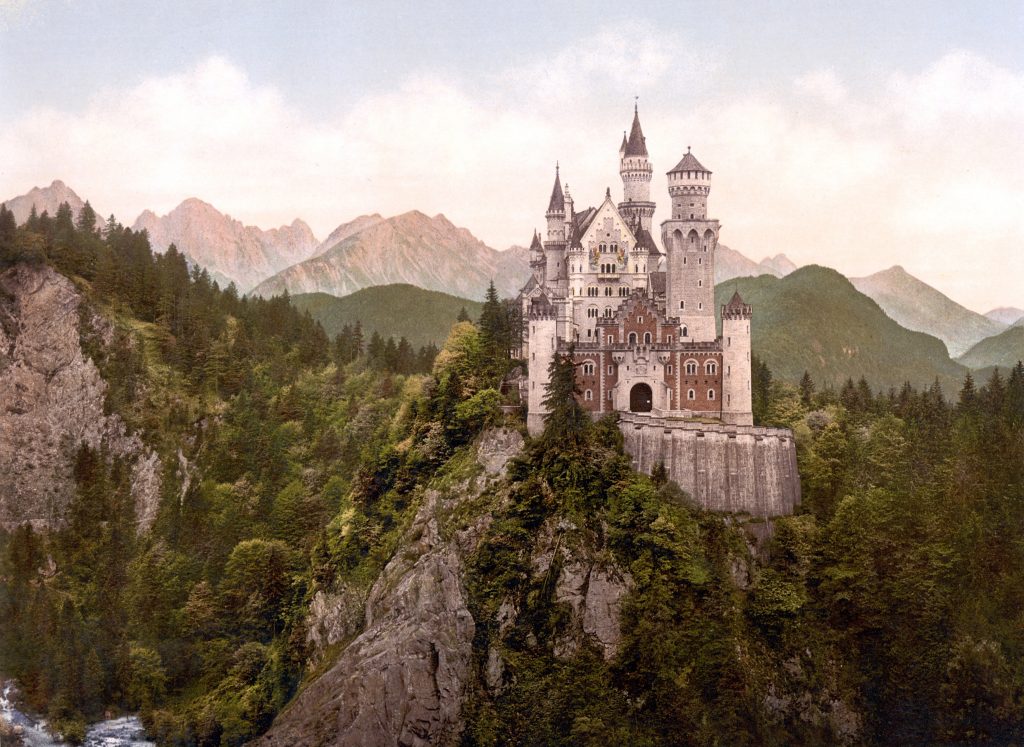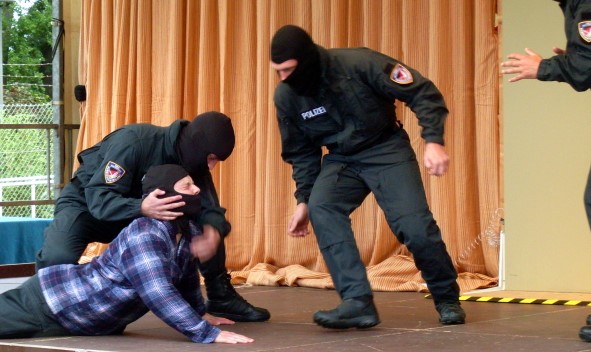Neuschwanstein is 150 years old! And it has a surprise up its sleeve Posted by Sten on Sep 5, 2019 in Culture, Holidays, Language
You’ve heard of this place. And you have definitely seen it, or a version of it. Schloss Neuschwanstein (Castle Neuschwanstein) is celebrating its 150th birthday today, on September 5. We say herzlichen Glückwunsch! But there’s more: it comes with a special Geburtstagsüberraschung (birthday surprise)!
Grundsteinlegung
Schloss Neuschwanstein is one of Germany’s most famous sights. With its märchenhafte (fairytale-like) look and location, incredible interior and the magical and crazy story behind the castle (read more on that in our previous blog on the castle!), it is kein Wunder (no wonder) that it is a true Touristenmagnet (tourist magnet)!
And so today 150 years ago, the Grundstein (cornerstone) was laid. And it wasn’t just any other Stein (stone). It has a Hohlraum (cavity) which contains Goldmünzen (golden coins) geprägt (minted) during the life of the Bauherr (builder) König Ludwig II von Bayern (King Ludwig II of Bavaria), a Portrait (portrait) painted on Porzellan (porcelain) and more. Here’s the original document signed by the King 150 years ago and a rough English translation:
GERMAN ORIGINAL
Die in den Grundstein eingelassene Urkunde des Königs
Wir Ludwig II. von Gottes Gnaden König von Bayern usw. urkunden hiermit, daß wir zum Schlusse gekommen sind, an jener Stelle, wo einst die Burgen Vorder- und Hinterschwangau ihre Zinnen erhoben, ein neues Schloß für Uns und Unsere Hofhaltung erbauen zu lassen und daß Wir zu diesem Behufe bereits die nöthigen Befehle an Unseren Hofbaurath Eduard Riedel übertragen haben.
Wir befehlen diesen Bau in den Schutz Gottes, der Heiligen Maria, als der Patrona Bavariae und des Heiligen Ludwig und bestimmen, daß gegenwärtige Urkunde nebst Unserem auf Porzellan gemalten Bildnisse, dann mit Bauplan und mit je einem Stück der während Unserer Regierung in Bayern geprägten Gold- und Silbermünzen in den Grundstein gelegt und daß dieser sodann in die bereits begonnene Grundmauer des Herrenhauses eingefügt werden soll.
Geschehen Schloß Berg am Würmsee, den 5ten September 1869
ENGLISH TRANSLATION
(The king’s certificate laid into the cornerstone
We Ludwig II by God’s mercy King of Bavaria etc. hereby certify that we have decided that at the place where once the castles Vorderschwangau and Hinterschwangau raised their crenels, we let a new castle be built for Us and Our court and that we have already given the necessary orders for this purpose to our royal architect Eduard Riedel.
We order this construction in the protection of God, the Holy Mary, as the Patrona Bavariae and the Holy Ludwig and determine that this certificate, along with Our likeness painted on porcelain, blueprint and with each a piece of gold and silver coins minted during Our reign in Bavaria shall be laid into the cornerstone and that this block shall then placed into the already started foundation wall of this manor.
Took place Castle Berg am Würmsee, on September 5 1869)
So what’s the birthday surprise?
Even though all this is known about the Grundstein, it was never known where it could be found exactly. The Baupläne (blueprints) indicated in which room the Grundstein was located, but it was never found there. Until now! Just a week ago, the Grundstein was located. To the inch. How?
With an elektronisches Minensuchgerät (electronic minesweeper). By whom?
The Sprengkommando des Bayerischen Landeskriminalamts (demolition squad of the Bavarian Office of Criminal Investigations).
Yes, really.
The wall in front of the Grundstein had a Messingkapsel (brass capsule) laid in to mark the location of the cornerstone. And Messing is something those minesweepers detect! So it turns out these Kommandos do more than defuse dangerous WWII bombs, as they did in Dresden last year.
After 4 hours of work, they made the find. What a perfect birthday surprise for the castle’s 150th anniversary!
However, the Grundstein will not be removed. The Bayerische Schlösserverwaltung (Bavarian Castle Administration) decided to leave the Grundstein where it is. Denkmalschutz (monument protection). And even if they removed it, there would not be much to learn: what is inside is known already anyway!
It is a kleine historische Sensation (small historic sensation), as one historian called it.
Have you visited the castle? Are there amazing places like these in your country? Let me know in the comments below!

Build vocabulary, practice pronunciation, and more with Transparent Language Online. Available anytime, anywhere, on any device.






Comments:
Scott Baltic:
One tiny correction from a long-time editor. Special police units don’t “diffuse” a bomb, they “defuse” it, i.e., they remove the fuse (or fuze) that would set off the main explosive.
To diffuse is to spread, as in to diffuse knowledge.
Sten:
@Scott Baltic Of course! Appreciate that, I corrected it 🙂